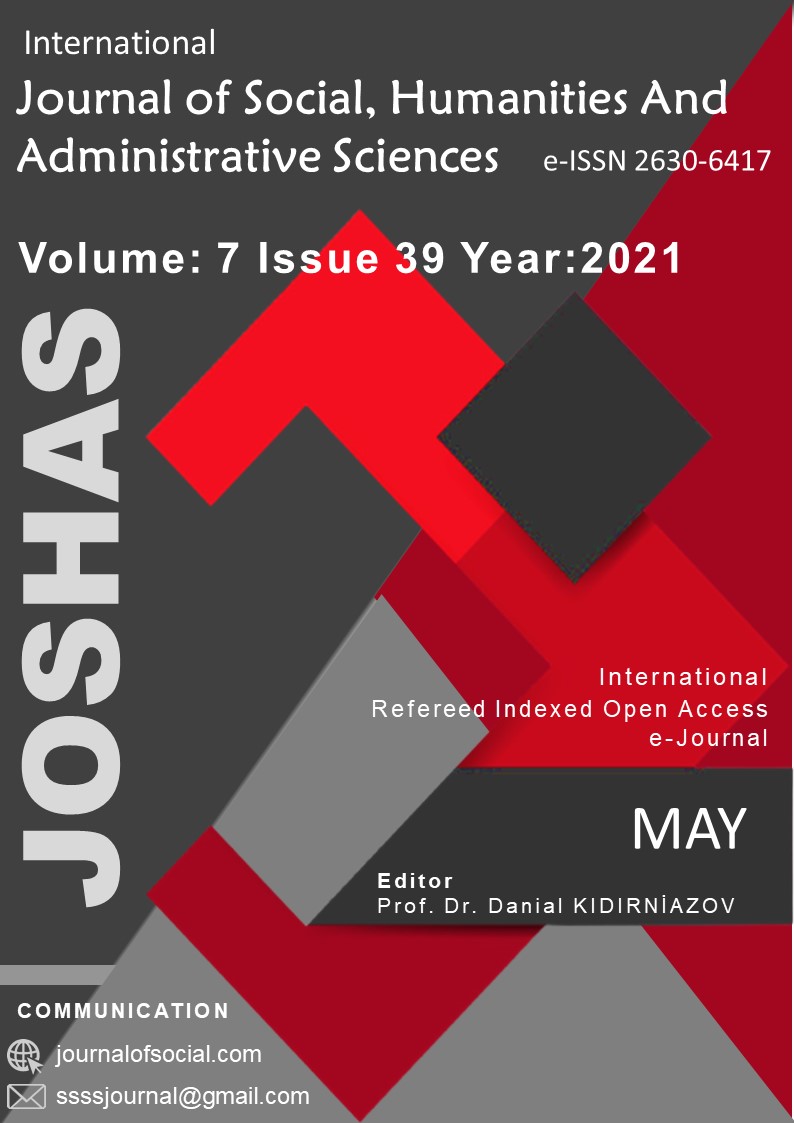TÜRKİYE’DE OKUTULAN MEDYA OKURYAZARLIĞI ÖĞRETİM MATERYALİNİN GÖRSEL BİÇİMİNE İLİŞKİN ÖĞRETMENLERİN GÖRÜŞLERİ
Author :
Abstract
Bu araştırmanın amacı, medya okuryazarlığı dersine giren öğretmenlerin medya okuryazarlığı öğretim materyalinin görsel biçimine ilişkin görüşlerini incelemektir. Araştırma nitel araştırma yöntemi ile gerçekleştirilmiştir. Araştırmanın çalışma grubu Kütahya il ve ilçe merkezlerindeki ortaokullarda görev yapmakta olan öğretmenler oluşmaktadır. Çalışma grubundaki öğretmen adaylarının 17’si erkek, 3’ü kadındır. Araştırma etiği nedeniyle araştırmaya katılan öğretmenlerin görüşleri açıklanırken gerçek isimleri gizli tutulmuş ve katılımcılar kodlanmıştır. Araştırmada elde edilen verilere göre alt temaların oluşturulması sürecinde araştırmacı tüm katılımcıların cevaplarını okumuş ve alt temaları oluşturmuştur. Daha sonra araştırmacı, verileri iki ana tema altında toplamıştır. Medya Okuryazarlık kitabındaki görsellerin dersin işlevselliği açısından, Grafiksel (doku, orantı, zıtlık), Sayfalarda boşluk, Sayfa içinde denge, İmge kullanım (illüstrasyon, fotoğraf vb.), vurgu, renk armonisi ve görsel içerik (akılda kalıcılık, dikkat çekicilik, düşünmeye ve sorgulamaya teşvik, güncel bir yaklaşım, metin ilişkisi (mesaj-İmge), yazı karakteri, görsellerin konu anlatımına uygunluğu, hedef kitleye mesajı ulaşılabilirliği) olarak iki ana temaları; Ayrıca ana tema içinde grafiksel ve görsel içerik altında, Görsel Metin İlişkisi, görsellerin zihinde kalıcılığı, Görsellerin güncel yaşantıyla uyumu, Görsellerin öğrenci gelişim açısından uygunluğu’ alt temaları oluşturulmuştur. Ortaya çıkan öğretmen görüşleri, kavramlar ve ilişkiler tablolar halinde açıklanmış, anlamlandırılmış, yorumlanmış ve karşılaştırılmıştır. Bulgular sonucunda Türkiye’deki uygulamalar göz önüne alınarak önerilerde bulunulmuştur.
Keywords
Abstract
The purpose of this research is to examine the opinions of teachers who attended the media literacy course on the format of the media literacy teaching material. The research was carried out by qualitative research method. The working group of the research consists of teachers working in secondary schools in the provincial and district centers of Kütahya. Of the pre-service teachers in the study group, 17 are men and 3 are women. While the opinions of the teachers participating in the research were explained due to the research ethics, their real names were kept secret and the participants were coded. In the process of creating sub-themes according to the data obtained in the research, the researcher read the answers of all participants and created the sub-themes. Then the researcher gathered the data under two main themes. In terms of the functionality of the course, the visuals in the Media Literacy book are Graphical (texture, proportion, contrast), Gap in pages, Balance within the page, Image usage (illustration, photography etc.), emphasis, color harmony and visual content (persistence, attention, thinking and two main themes such as encouragement to questioning, an up-to-date approach, text relation (message-image), font character, appropriateness of visuals to the subject expression, message reach to the target audience); In addition, under the graphic and visual content within the main theme, Visual Text Relation, the permanence of the visuals in the mind, the harmony of the visuals with the current life, the suitability of the visuals in terms of student development were created. The teachers' views, concepts and relationships that emerged were explained, understood, interpreted and compared in tables. Findings practices in Turkey in as a result of suggestions were made considering.
Keywords
- Akbaba, B. (2009). Atatürk ilkeleri ve inkılap tarihi öğretiminde çoklu ortam kullanımının akademik başarı ve
- Akbaba, B. (2009). Atatürk ilkeleri ve inkılap tarihi öğretiminde çoklu ortam kullanımının akademik başarı ve tutumlara etkisi. Doktora Tezi, Gazi Üniversitesi Eğitim Bilimleri Enstitüsü, Ankara.
- Bahire, E. Ö. (2018).Medya Okuryazarlığı ve Yetişkinlerin Öğrenmesi. (Editör: Nurçay Türkoğlu). Medya Okuryazarlığı. İstanbul: Marmara Üniversitesi İletişim Fakültesi Yayınları, 55-61.
- Creswell, J. W. (2014). Araştırma deseni. (Demir, S. B. Çev. Ed.). Ankara: Eğiten Kitap. Frau, D. M. (2006). Medya eğitimi, UNESCO, Paris, L’exprimeur
- Gürdal, A., Aksoy, M., ve Macaroğlu, E., (1995). İlköğretimde kavram kargaşası. Bilim Ve Teknik, Tübitak Yayınları, 334, 96-97.
- Kılıç, Z., Atasoy, B., Tertemiz, N., Şeren, M. ve Ercan, L. (2001). “Öğretimde Ders Kitaplarının Yeri, Önemi veGenel Özellikleri”. Leyla Küçükahmet (Ed.). Konu Alanı Ders Kitabı İnceleme Kılavuzu, Fen Bilgisi (ss. 93-111). Ankara: Nobel Yayın Dağıtım.
- Küçükahmet, L. (2003). Konu alanı ders kitabı inceleme kılavuzu. Ankara: Nobel Yayın Dağıtım
- MEB, TTK ve RTÜK, (2006), İlköğretim medya okuryazarlığı dersi öğretim programı ve kılavuzu, Ankara: MEB yay.
- MEB, TTKB (2013), Ortaokul Ve İmam Hatip Ortaokulu Medya Okuryazarlığı Dersi Öğretim Programı, MEB, Ankara
- Miles, M.B. & Huberman, M. (1994) Qualitative Data Analysis: An expanded sourcebook (2.baskı)Tousand Oaks, CA:Sage
- MOD (2017), Medya okuryazarlığı derneği tanıtım kitapçığı, s.10, İstanbul.https://medyaokuryazarligi.org/tanitim- kitapcigi.pdf
- Sitte, C.,(2001). GW- Schulbuch. Wolfgang Sitte ve Helmut Wohlschlag (Ed.). Beiträge Zur Didaktik Des“Geographie und Wirtschaftskunde”- Unterrichts (ss. 447-472). Wien: Universität Wien Institut Für Geographie und Regionalforschung.
- Ültanır, G. (2000). Karşılaştırmalı eğitim bilimi. Ankara: Eylül.
- Yıldırım, A. ve Şimşek, H. (2016). Sosyal bilimlerde nitel araştırma yöntemleri. Ankara: Seçkin Yayıncılık.
- Yıldırım, A. ve Şimşek, H. (2006). Sosyal Bilimlerde Nitel Arastırma Yöntemleri, Seçkin Yayınevi, Ankara.





